Developing dialogue: How to establish your own brand communications strategy

How do you connect with your customers?
It doesn’t matter whether you’re a local sole trader or the CEO of a multi-national corporation, communication is essential for any organisation. In fact, studies show that an emotional link is more important to your customers than anything else.
The good news is that it’s never been easier for companies to reach out to their audiences and prospective clients. The rise of social media, combined with the ever-present popularity of content marketing ensures that brands have countless ways to speak to their customers.
In fact, with the right brand communication strategy in place, you might find that consumers become co-creators in your content plan. Around 80% of the videos, blogs, and messages posted online are user-generated.
Every article you publish, comment you tweet, and video you shoot opens a dialogue with your customers that takes you one step closer to brand ambassadors, and client loyalty. The question is, how do you start speaking with your audience?
By the time you’ve finished reading this guide, you’ll know everything there is to know about building a brand communication strategy – from which channels you can use, to how you can add volume to your voice.
Let’s get the conversation started.
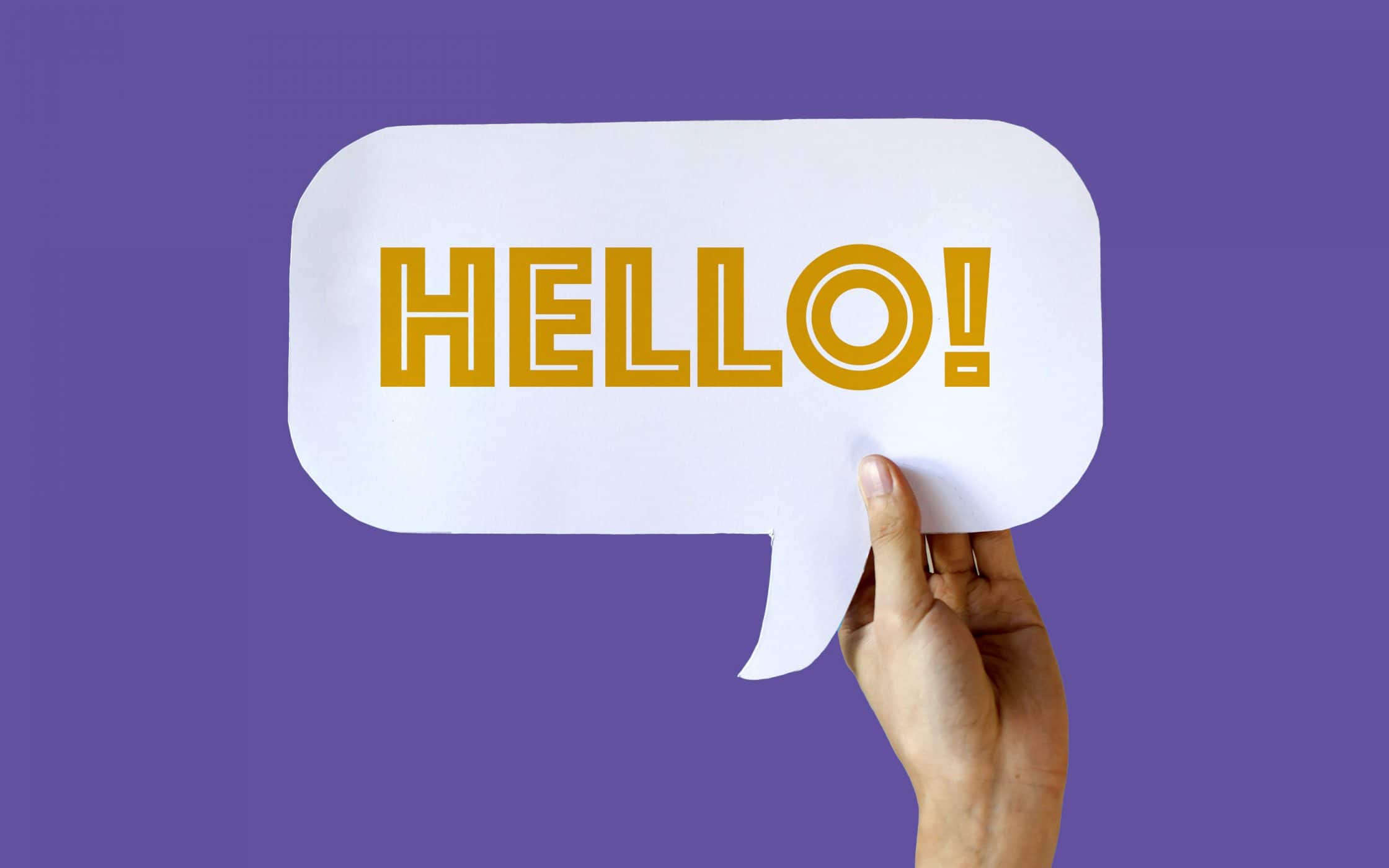
Creating connections: What is a brand communications plan?
“Brand communications” isn’t just a fancy term for a marketing strategy. While the two concepts have a lot in common, the defining factor of a communication plan is that you don’t just speak to your audience, you listen to what they say back to you, too.
A brand communications plan can do various things for your company. When implemented alongside your method for brand reach, it can:
- Help you to understand your audience and position in the marketplace, so you can optimise your existing marketing strategies. The more you listen to your audience, the more you’ll discover which content they respond to best, what issues they have with your products and services, and what you can do to improve satisfaction.
- Improve your products, by making you aware of common problems your consumers have. For instance, if people love your home-made cookies, but they wish they were gluten-free, you can add a new product to your portfolio to instantly enhance your value proposition.
- Deliver more cost-effective marketing. As you learn from your strategic brand communications plan, you’ll be able to eliminate marketing efforts that don’t work for your organisation, reducing unnecessary expenses.
Ultimately, a brand communications strategy is about getting to know your audience, crafting the right message, and making sure you’re present on the right channels. Eventually, better communications result in stronger, more memorable brand experiences for your audience, which lead to bigger sales.
The problem is that developing an effective marketing and communication plan is difficult. After all, you’re essentially creating a comprehensive roadmap that will guide your entire sales and marketing team through every interaction they have with a potential prospect or customer.
While a brand communications agency can help you to more accurately pinpoint the techniques best-suited to your company, there are a few things you can do to create the foundations of your communication strategy.

How to build brand communications: Finding your communication strategy
Defining an identity for your brand and clearly communicating that concept to customers is a key part of differentiating yourself in the modern marketplace.
Remember, emotional connections have been scientifically proven to sway buying decisions.
As marketplace trends and customer expectations change, your brand communications are sure to evolve. However, there are a few best-practice tips you can keep in mind to help you launch more successful conversations with your customers. For instance:
1. Start with buyer personas
The easiest way to make sure you’re speaking the right language during discourse with your target customers is to learn who you’re talking to. Buyer personas are documents that help you to understand your core customer groups. They’ll include helpful details that guide your tone of voice and personality in marketing materials.
For instance, if you know your ideal customer is a young millennial with a love of visuals, then you might share emoji-rich messages on Instagram, Twitter, and Snapchat.
2. Know your USP
Once you understand who you’re talking to, you need to determine what you’re going to be talking about. This means coming to terms with the value that makes you special in your chosen marketplace. A USP is more than just the product you’re selling, it’s the key element that sets you apart from your competitors. For instance, perhaps you have amazing customer service, a strong sense of corporate social responsibility, or an eye for innovation.
When you know your USP, do your best to demonstrate it during conversations with your audience, and remember to pay attention to how they respond.
3. Define your personality
Your USP and buyer personas will help you to determine what kind of personality you should be showing in your brand communications. A brand needs a “human” side to connect on an emotional level with its target audience. Remember to cater to your buyer personas, and work on ensuring consistency throughout every channel in your communication plan.
It might be worth designing a brand manifesto, so you can project a single voice, look, and core message every time you post a blog, create a podcast, or post on social media. This will help customers to feel gradually more familiar with your company.
4. Choose your marketing mix
The development of the digital marketing space means that there are more ways to communicate online than ever before. Today’s customers use an average of 6 touchpoints to connect with their favourite companies. Since no two brands are the same, there’s no standard mix that will work for everyone.
The key to building successful brand communications is getting to know your options. The more you understand each channel, the more you can choose media that suits your audience and your goals.
5. Establish metrics for success
Finally, decide what you want to accomplish with your brand communication strategy. Are you hoping that a conversation with your audience will help you to design a stronger product? Maybe you just want to develop loyal customers willing to advocate for your brand? Whatever your ambitions are, setting key performance indicators or “KPIs” will help you to track your success. As a starting point, you can look at:
- Average shares/likes on social media.
- Comments on your website, videos, and social channels.
- Customer satisfaction (ratings, reviews, and testimonials).
- Conversion rates.
- Email subscribe or follow rate.
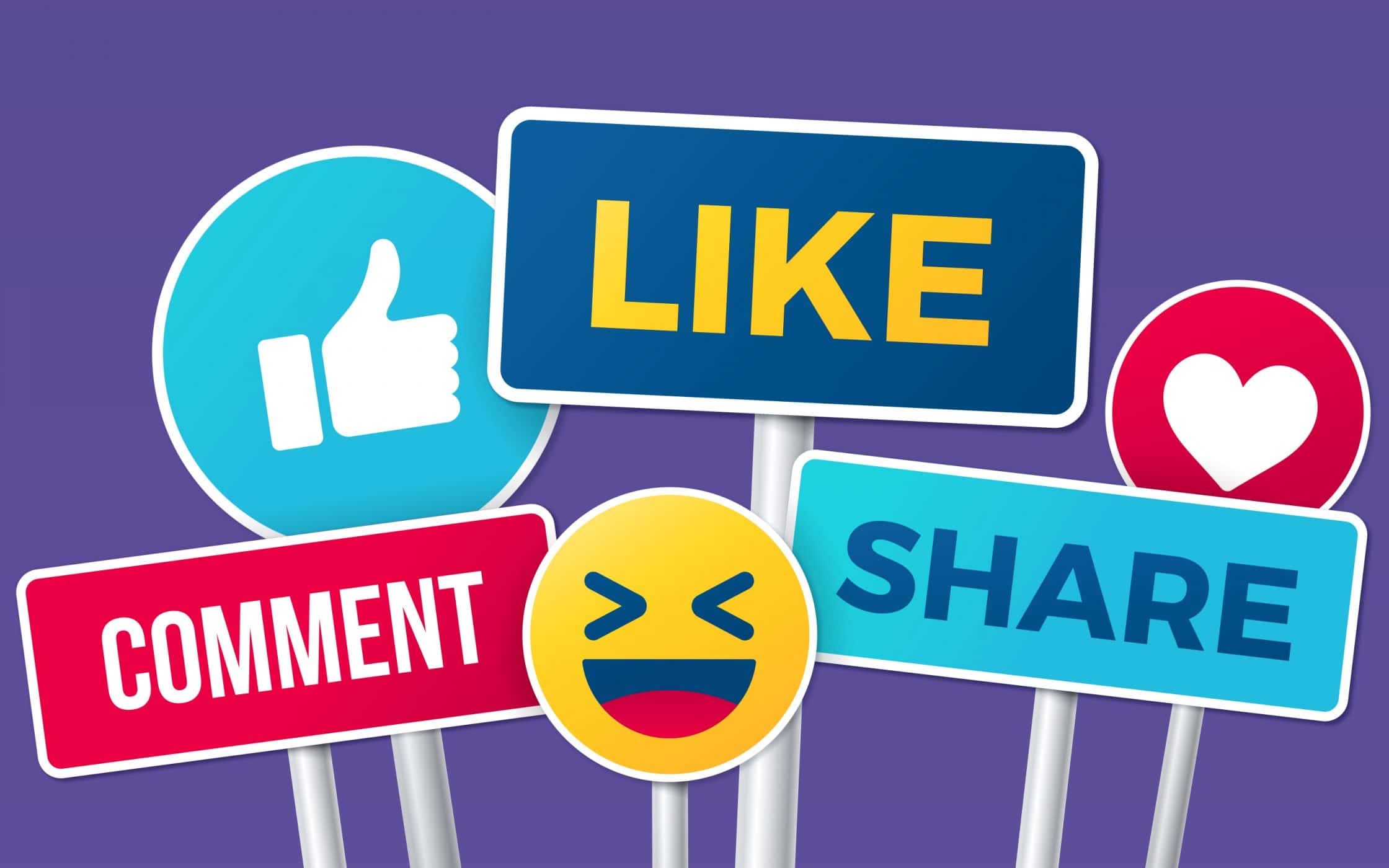
Avenues for brand communication: Which platforms should you use?
Designing a successful brand communications plan takes some serious skill.
You need to make sure you’ve covered all the right bases while ensuring that your message is highlighted in the best possible light. It’s no surprise that so many companies get the help of a professional brand communications agency.
One of the first questions you’ll need to answer when you’re developing a strategic brand communications plan is: “Which channels are you going to use?“. There are countless options available, from direct mail and offline marketing to influencer campaigns and word of mouth. Here are just 3 of the most popular tech-driven channels for any communication plan.
1. Social media
Social media might be one of the most crucial element of any modern brand communications plan, depending on what line of business you’re in. Thanks to platforms like LinkedIn, Twitter, and Facebook, customers, and companies are having more conversations today than ever before.
While practically every company will use at least one social media channel to build dialogue with their followers, the key to success is making sure that you’re active on the platforms that appeal most to your target audience. Figure out where your clients are spending their time and create your profiles. When you’re ready, develop a content calendar to remind you to constantly update your social presence.
Remember, in today’s connected world, brand loyalty often depends on how well you can leverage the power of social media in building connections with prospects. There are more than 1.4 billion active daily users on Facebook today – and that’s just one social network. If you don’t have a social strategy already, now’s the time to get one.
2. Email marketing
While email might not be as on-trend as social media marketing, it’s still a powerful choice for business owners. Companies can implement email marketing in their brand communications in several ways. For example, you might create a weekly newsletter, or use promotional emails to advertise an upcoming sale or event.
As with any communication strategy in the modern world, knowing your target audience is essential here. Not every subscriber will want the same email blast from you. Take the time to segment your followers from the beginning and remember to offer them opportunities to respond to you frequently with surveys, polls, and questionnaires.
Email marketing should be about nurturing the relationships you have with your followers, not just showing them the latest products and sales, you have to offer. The more you ask your customers to respond to you, the more effective your communications plan will become.
3. Web content
Finally, content marketing is still king in the world of brand communication. Research shows that the average attention span is around 8.25 seconds. This means that if you want your content to earn the attention of your audience, you need to make sure whatever you post is compelling and relevant.
With the right communications strategy, you can find out what your customers want from your content. Invite them to share their thoughts in the comments below, offer them an opportunity to vote on their favourite videos or blog posts, or simply ask them what they want to hear about. The more you listen to your followers, the more valuable your content will become, which will drive more customers to your page so that the cycle can continue.
Remember that web content isn’t necessarily restricted to blog posts and SEO copywriting. Your brand communications online can include anything that sparks a response from your target audience. Some of the most popular options today include:
- Brand videos: Live video on social media is a great way to start a dialogue with your audience. During a live broadcast, you can ask your followers questions and respond to their queries in real-time.
- Podcasts: Podcasts can be a low-cost way to respond to the common questions that your customers have been asking you. During a weekly podcast, you could cover news updates, ask for call-ins and questions from your customers, and get the conversation started online.
- Competitions: Contests are a great way to develop discussions with your followers. For instance, you could ask your Instagram followers to share pictures of the best ways they like to use your product. This could inspire future blog posts, and it also helps to engage your customers.
Speaking their language: How to upgrade your brand communication
Part of designing effective brand communications is finding the right voice.
When you first launch a brand, you’ll spend some time creating your voice as a complement to your existing personality. This tone should represent the unique aspects of your company and demonstrate the kind of organisation you are to your followers.
For instance, while Coca Cola has a fun and friendly voice, Apple is more sophisticated and “modern”. Your voice should stay the same on every channel – regardless of how you’re connecting with your customers. However, if you want to make your brand communication plan as successful as possible, then you need to make sure the tone you choose resonates with your followers.
Here are just a few tips for upgrading your communication strategy, along with examples of companies who have gotten their own communication plan down to a fine art.
1. Be authentic and honest
Today’s customers want a relationship with their favourite companies. In other words, they don’t want you speaking to them like they’re just another paycheque – they want authentic brand communication.
To make your conversations as honest as possible, start by looking at the brand values you established for your company. If you claim to be an organisation that cares about the environment, how do you demonstrate that in your marketing materials? If you’re all about innovation, how can you show your love of development in the things you say?
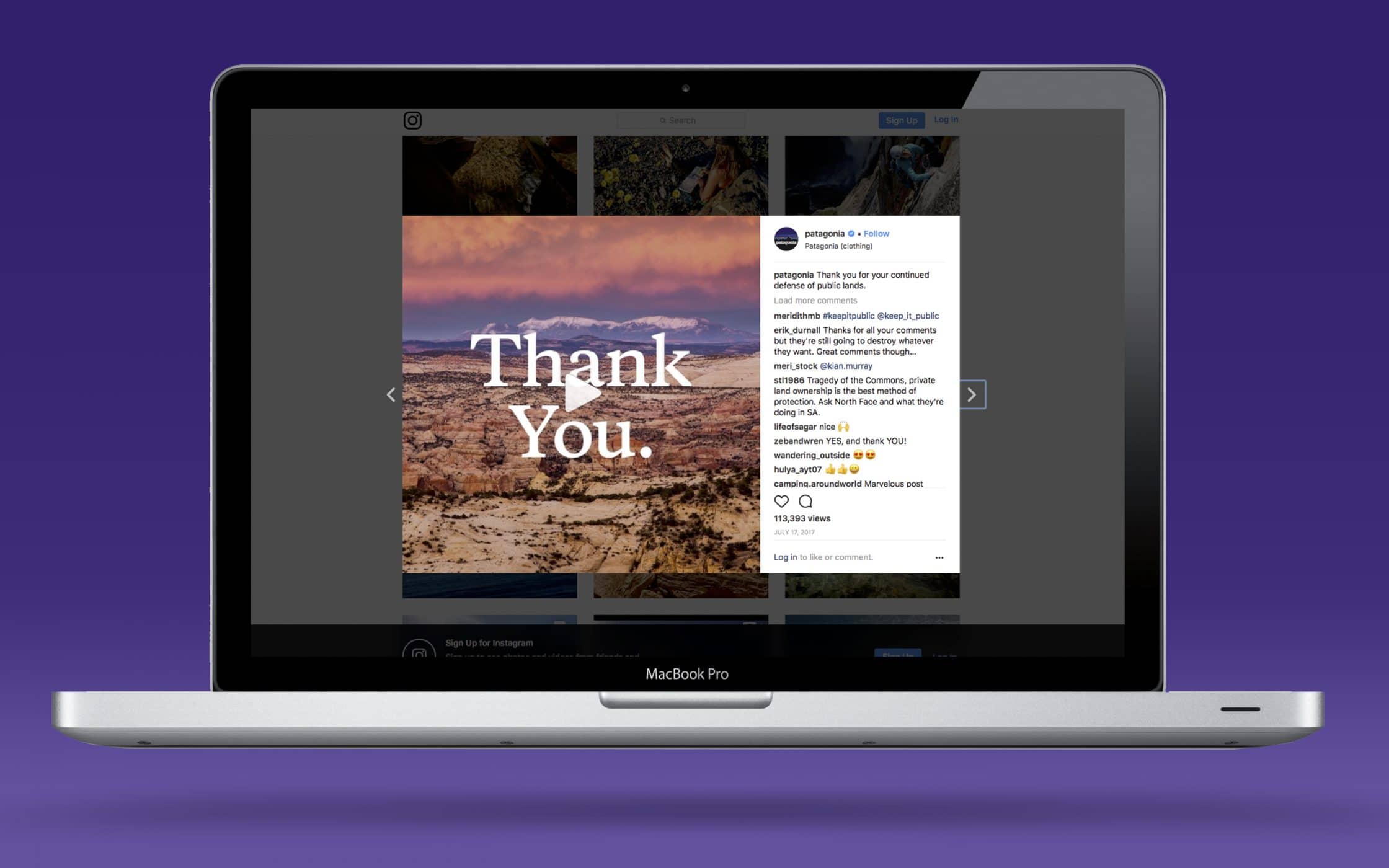
Patagonia is one of the best examples of a company with an authentic brand communications plan. Instead of spending all their money on traditional advertisements, this unique company works at showcasing their reliability, building human bonds, and getting involved with their community. In other words, they build their relationships like a human being would and encourage people to share their experiences in a friendly way.
2. Have conversations
Remember earlier when we said that brand communication isn’t just about speaking “at” your audience? Conversations are key in the modern marketing environment. Today’s brands can really reach out and listen to their followers – and there are countless benefits to doing that.
Taking the time to develop real and genuine dialogue with your prospects shows that you care about your customers. It also ensures that you’re constantly educating your marketing and sales team with new information about what your followers want from you.
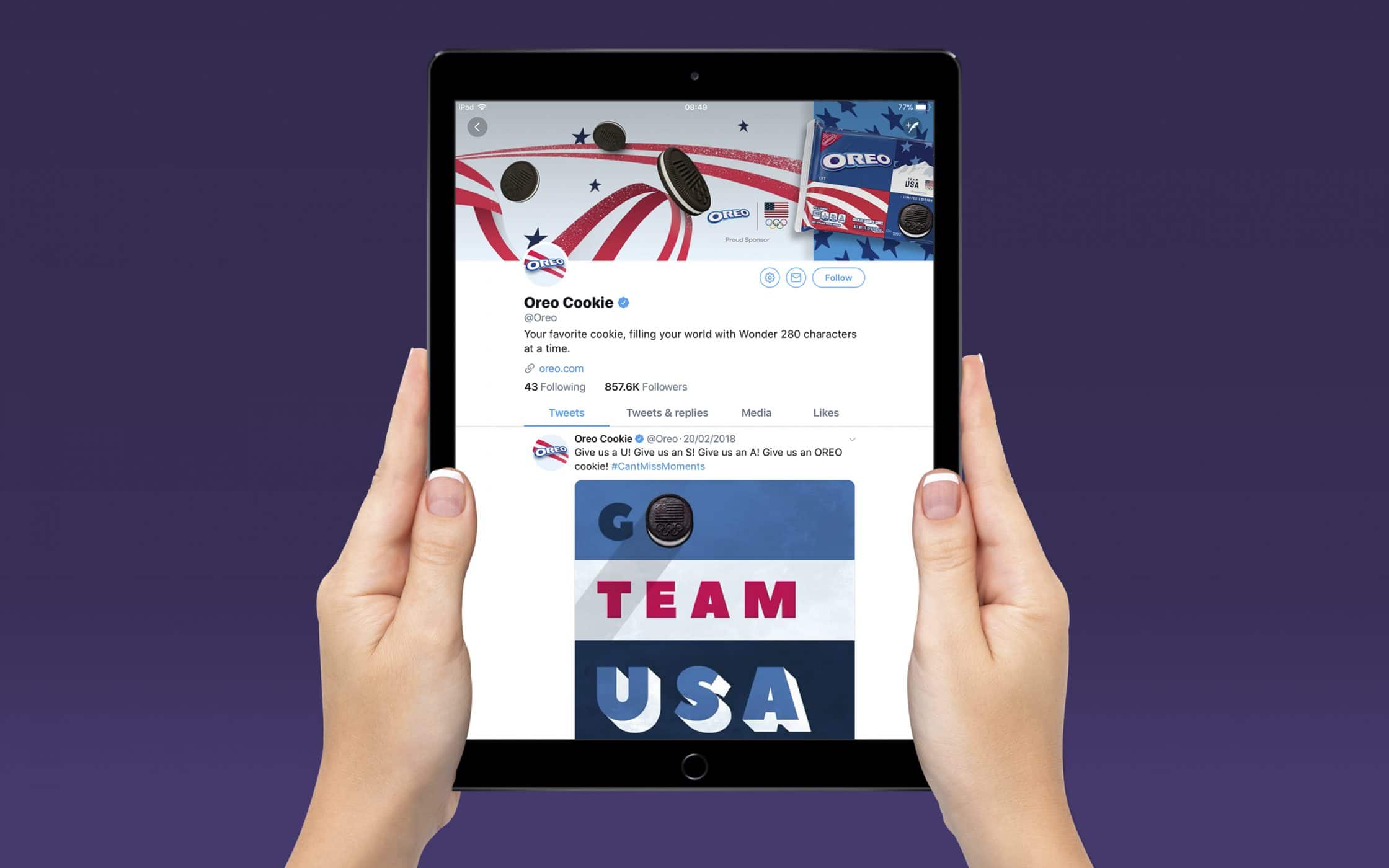
You can even start conversations with other brands to show off your human side. Oreo shows off its playful nature constantly on twitter with conversational messages to other companies and its community
3. Transform customers into advocates
You’re currently marketing in a world where people are more likely to listen and trust the words of their peers, than faceless corporations. With that in mind, it makes sense that your brand communications plan would include some consideration of the benefits of word of mouth marketing.
The more you focus on combining exceptional customer service experiences with shareable, enticing content, the more likely it is that your brand message will go further, carried by your social fans. You’ll need to devise a social media campaign that targets the right people, and you may even want to consider adding influencers to the mix. However, if you can make your clients into advocates, then you can stop wasting money on your marketing efforts and start convincing your people to advertise for you.

For instance, do you remember when Starbucks engaged fans from around the world by asking them to create their own white cups? The #WhiteCupContest not only allowed the organisation to tap into user-generated content, but it also increased social media reach and created happier, more engaged customers.
4. Focus on exceptional customer experiences
Experience is primed to overtake product and price as the key differentiator for brands in 2020. Part of great brand communications is knowing how to keep your followers happy. That means that you need to think about the quality of the engagements you’re having with your customers.
Thoughtfully responding to comments on your blog, or messages on your social media wall helps to show the humanity of your brand while building trust. Additionally, speaking directly to your customers will make it easier for you to learn how to support them. A conversation is far more telling than any pile of data.
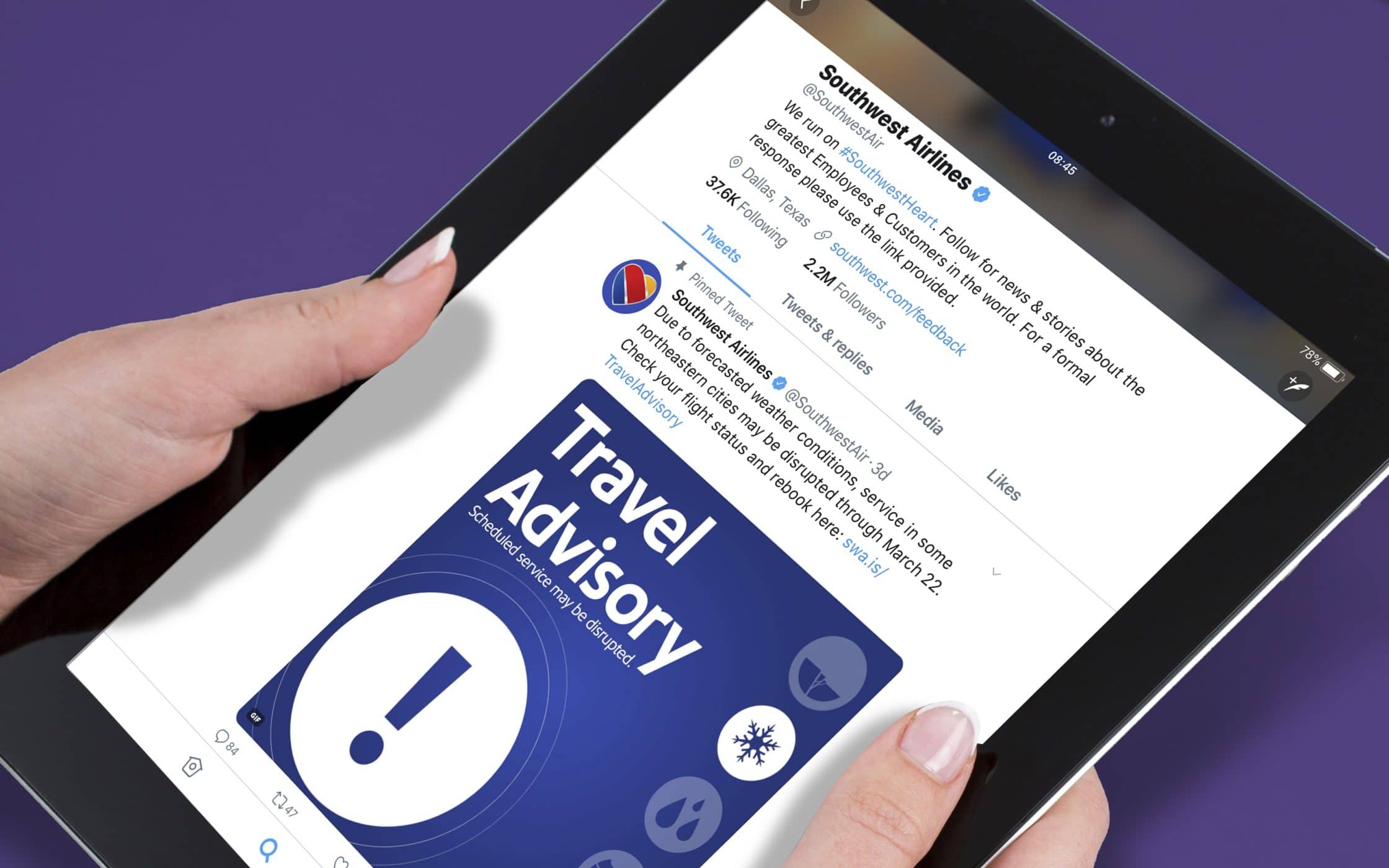
Take the time to listen to what your customers are saying to you. This might mean answering their questions on email, responding quickly to complaints on social media, or simply providing useful updates. Southwest Airlines are constantly adding information to their Twitter feed to help support their Customers. Followers can see updates on delayed flights, air their concerns, and ask for help too.
5. Be open and transparent
In a world where customers can find almost anything they need to know about your company online, dishonesty won’t take you very far. Brand communications always go a lot smoother when everyone is honest and open. If you’re willing to take your clients behind the scenes of what’s going on with your business, they’ll be far more likely to trust you. What’s more, you’ll be able to separate yourself from your competitors by showing you have nothing to hide.

McDonald’s in Canada launched the “Our Food. Your Questions” campaign to help improve their reputation after years of scrutiny as a fast food brand. For a long time, McDonald’s suffered from unflattering myths about the ingredients it uses to make its burgers. The Canadian campaign offered customers a chance to publicly ask for information about the myths and legends.
Ultimately, as worrisome as the strategy must have been for the company, it gave McDonald’s a chance to dispel some rumours, educate customers, and improve brand awareness.
Designing the ultimate brand communications plan
Communication will always be key to running a successful business.
While brand communication isn’t a new concept, the difference today is that companies aren’t just talking “at” their followers. Modern customers have a voice, and they’re using it to share their opinions, air their concerns, and educate businesses on what they need.
While the shift to “marketing at” customers, to “marketing with” them can be a complex transformation for many companies, we’ve reached a point where every brand needs to evolve. With a strategic brand communications plan, you can carefully decide how you’re going to connect with your customers, what kind of voice you’ll use, and what you can do to optimise the dialogue.
Today’s brand communication plan isn’t just about blasting messages out to thousands of customers at once. Nor is it about sending the same boring advertisements to countless disinterested clients. The right communication is your chance to start developing real relationships with your clients – the kind that leads to brand loyalty and customer advocacy.
How have you upgraded your brand communications strategy in recent years? Are you using new channels? Have you changed your voice? Have you found that you need to take additional steps to integrate your marketing mix? Tell us about your experience in the comments below or reach out to Fabrik for more information.
Be part of the conversation, invest in brand communication.
If you enjoyed this article, you might enjoy these too:
— Ideas to launch your brand into a different orbit
— How to establish your brand aims and objectives











